Bill Amberg creates leather furniture in collaboration with the Knepp Estate
London-based designer Bill Amberg has created a series of furniture pieces for the Knepp Estate, Sussex, using leather from the rewilding project's animals for an on-site cafe due to open in 2023

‘These are the healed scars from where the cattle have dragged themselves through bushes,' says designer Bill Amberg as he points to the marks on a new range of furniture made by his studio in collaboration with the Knepp Estate in Sussex. ‘And that’s absolutely perfect, because we want every piece of furniture to be different from the next.' Renowned for an audacious rewilding project started some 20 years ago, the Knepp Estate’s 3,500 acres have been allowed to return to nature and its cattle to roam the land freely throughout the seasons. ‘Their animals, deer, and pigs and cattle, don't come inside in the winter and don’t get any artificial feed,' explains Amberg. ‘They go into the woods in the winter and, in the summer they come out and go back into the meadows.'
When the idea was first floated about doing something with the skins of the longhorn cattle and deer from the estate, the Burrell family, who own it, thought they could make leather from the hides. It was Amberg who suggested going one step further and making something special and bespoke out of the material that was true to the estate’s ethos. Fast forward to a new capsule collection launched during the London Design Festival 2022, made out of leather from the estate that will be used in a new cafe restaurant due to open on the site in Spring 2023 and also sold separately on the Bill Amberg website.
Bill Amberg's furniture for the Knepp Estate
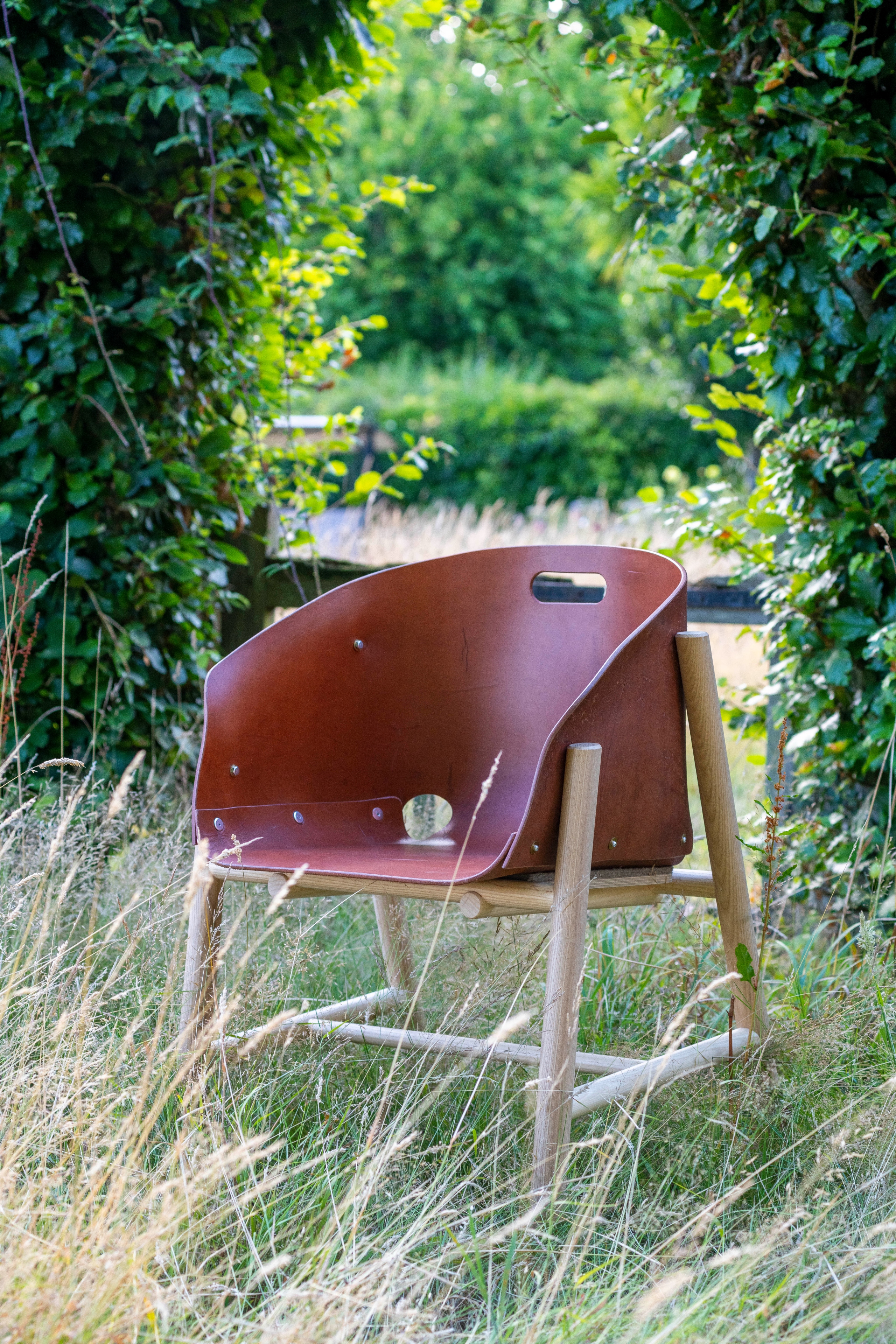
The quality of the leather from the animals on the Knepp Estate is second to none explains Amberg. The skins from commercial beef production, where the animals live indoors, never walk anywhere and are fed lots of cheap food and slaughtered very young, creates thin, veiny skins that have no character. ‘When you look at a really beautiful animal skin, it’s very evident how that animal has lived, and how healthy it is.' Also, unbeknownst to most of us, 90% of commercially made leather has a pigmented finish, which essentially means the top surface is sanded and treated with a filler and then sanded again until smooth and the grain printed back on the surface. This is the case even for well-known luxury brands.
For this collection the skins were tanned in two tanneries in the UK, and tanned using tree bark and finished with a simple wax, which will encourage a natural patination over time and use. One of the tanneries, which is located in Bristol, specialises in shoe sole leather and was ideal for working the leather so it could be used structurally. ‘One of the things I am very interested in,' says Amberg, ‘is taking the different techniques of leatherwork, which are principally bookbinding, saddlery, shoe making, case making and upholstery, and mashing them all up together. Taking an idea from saddlery and using it in upholstery, taking an idea from bookbinding and using it in architectural work. So scaling it up.'
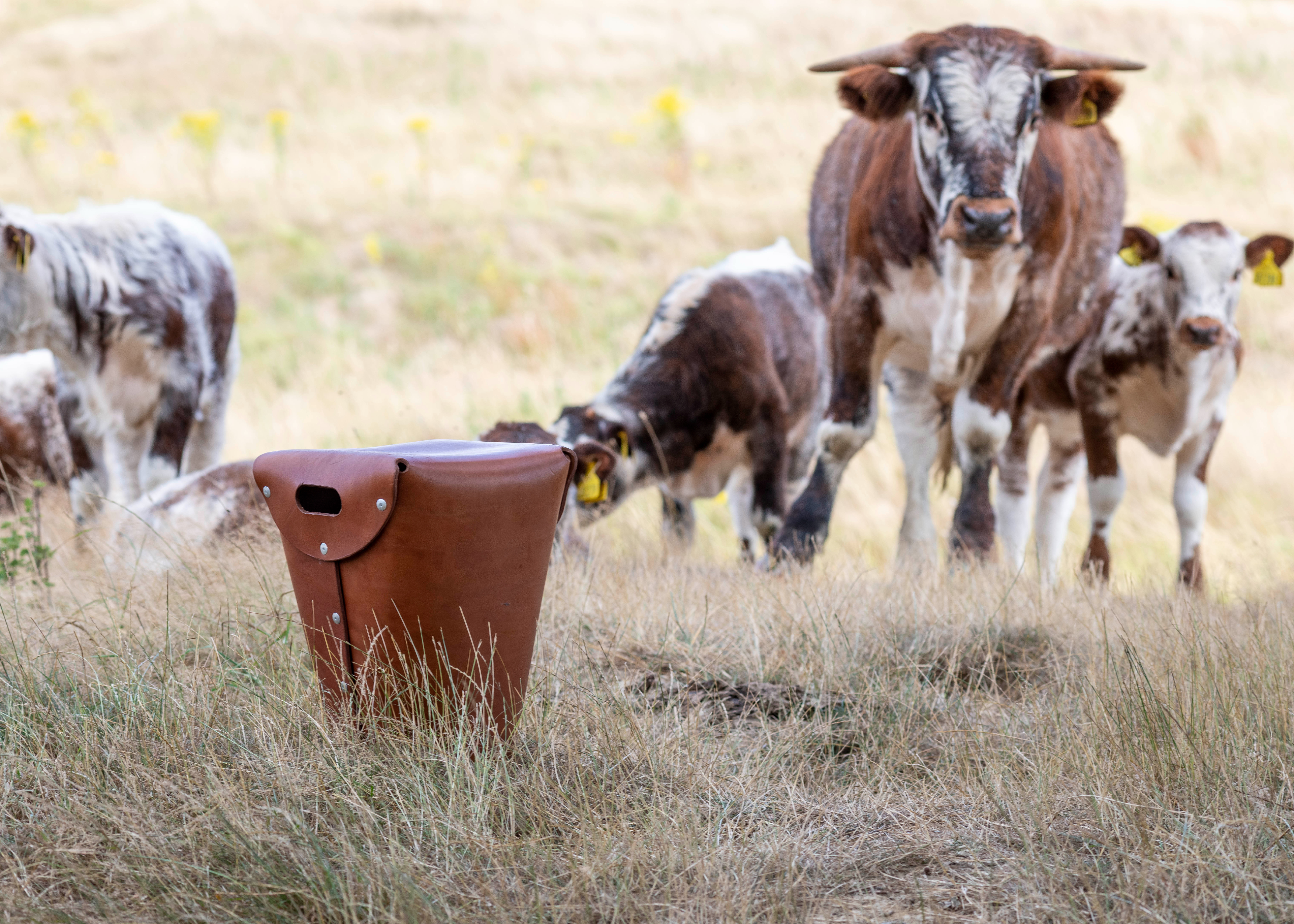
In this case Amberg experimented with shoe sole leather as a furniture material as it is rigid and more like plywood than a supple material in this form. This was perfect for creating a collection composed of a chair, a stool (formed as a cylinder), and a tub chair with a curved back that has been simply waxed and pressed, as well as log baskets and, in order to use every last part of the hide, coasters. (The deer hides don’t feature in the collection but will be used to create upholstered pads for the banquette seating in the cafe).
The sustainability of the range comes full circle through its wooden elements and frame, which are made out of Ash wood collected from dieback clearance on the estate. The same timber is being used for the tables in the cafe, which are not part of the collection but nevertheless interesting. ‘The restaurant is going to be in a Sussex barn dating back to medieval times and being restored by a timber frame building expert,' says Amberg. ‘He has made the tables using an old medieval technique and design.‘
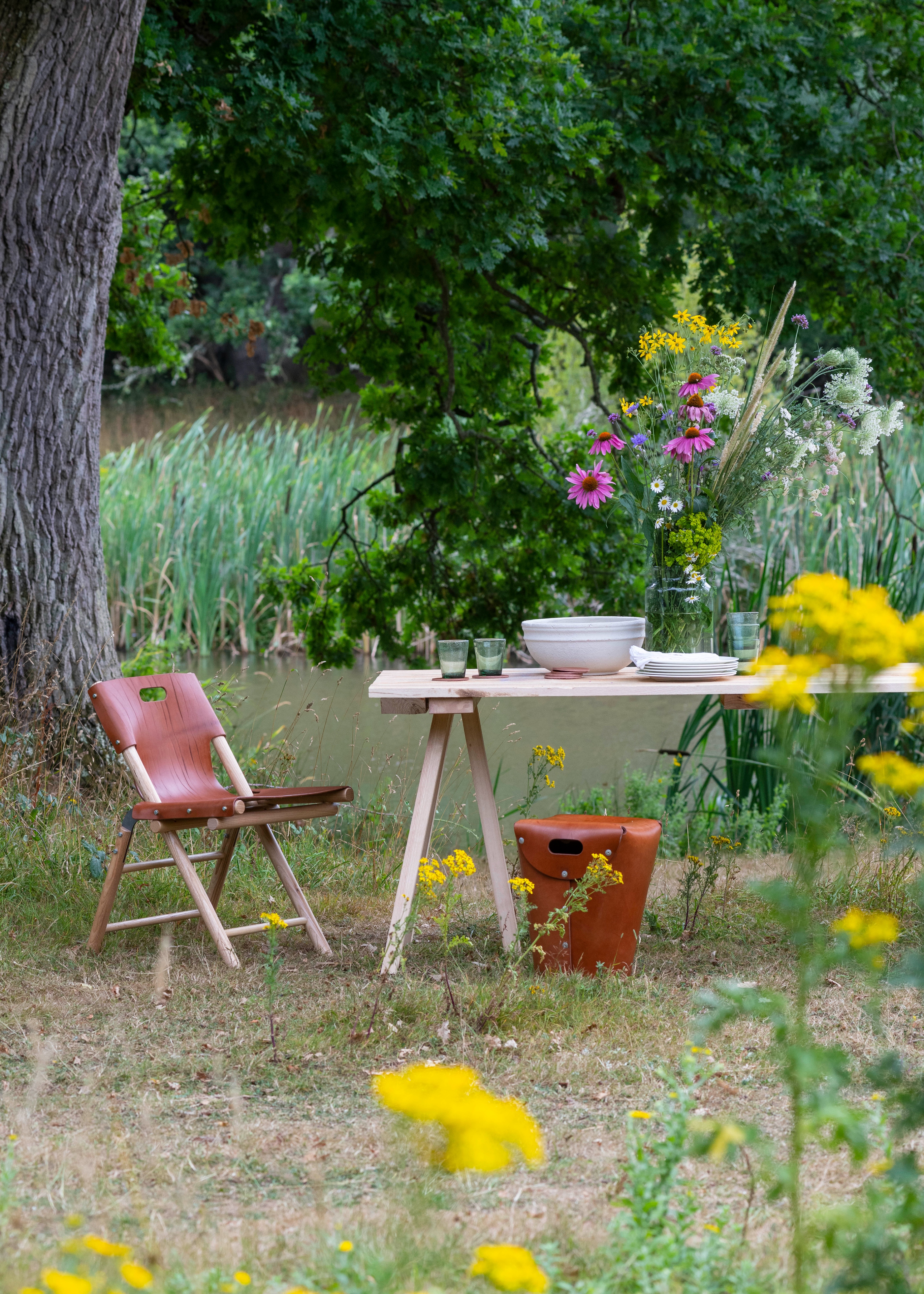
The beauty of this new furniture collection is not only that every piece is unique and will age differently but that it has sustainability built into it naturally. As Amberg says: ‘The conversation around the sustainability of the material is becoming more evident. That is why this particular project is so poignant because here is evidence of the material being used directly and appropriately.'
INFORMATION
Receive our daily digest of inspiration, escapism and design stories from around the world direct to your inbox.
Giovanna Dunmall is a freelance journalist based in London and West Wales who writes about architecture, culture, travel and design for international publications including The National, Wallpaper*, Azure, Detail, Damn, Conde Nast Traveller, AD India, Interior Design, Design Anthology and others. She also does editing, translation and copy writing work for architecture practices, design brands and cultural organisations.
-
 We gaze into our crystal ball to predict the tech hits (and misses) of 2026
We gaze into our crystal ball to predict the tech hits (and misses) of 2026The shape of things to come: seven technologies that will define the year ahead, from robotics, AI, aviation and more
-
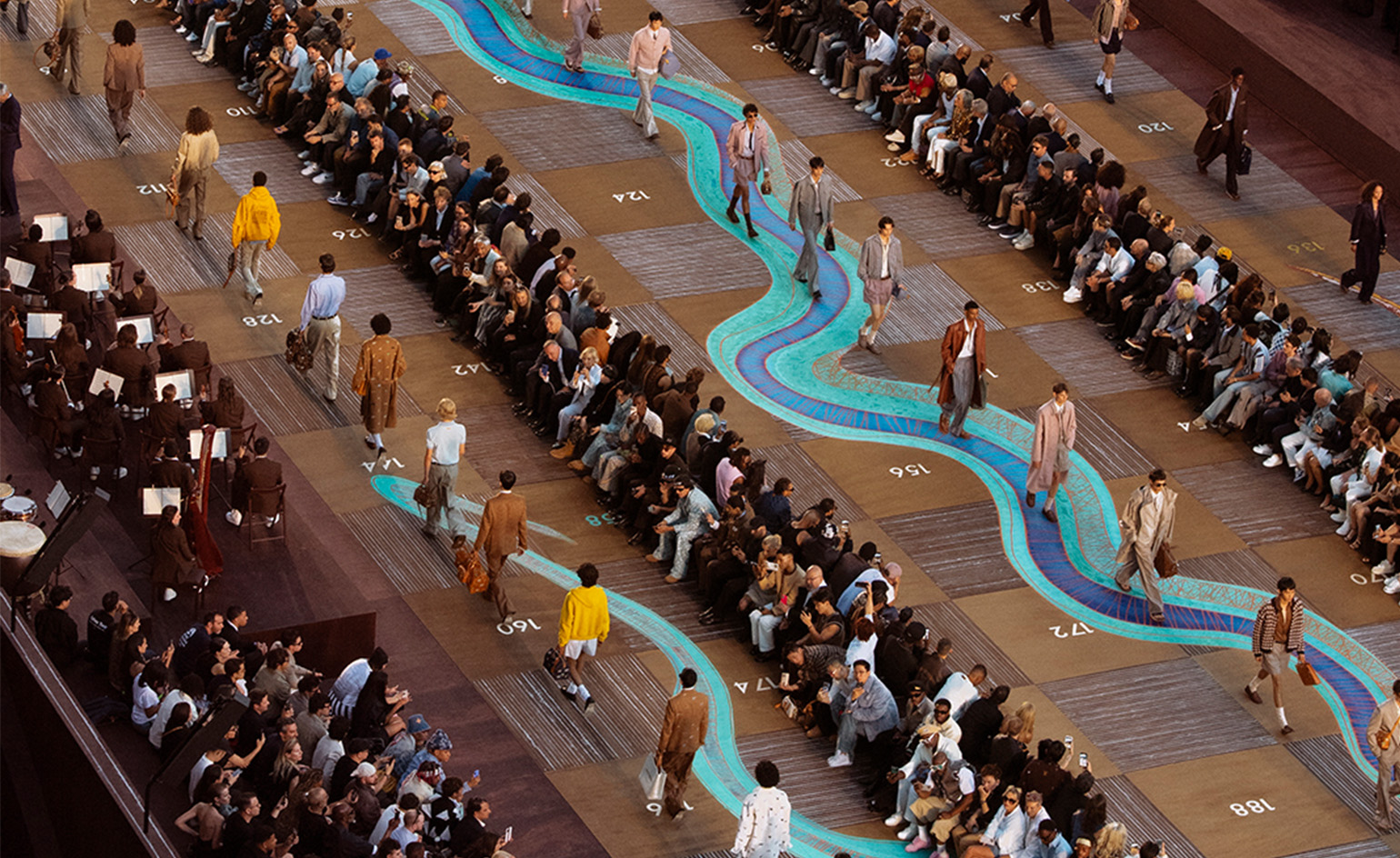 This documentary tells the story behind Louis Vuitton’s monumental Snakes and Ladders runway set
This documentary tells the story behind Louis Vuitton’s monumental Snakes and Ladders runway setThe new film offers a rare behind-the-scenes glimpse at how Pharrell Williams and Studio Mumbai conceived the 2,700 sq ft Snakes and Ladders board, which backdropped the house’s S/S 2026 menswear collection last June
-
 This remarkable retreat at the foot of the Catskill Mountains was inspired by the silhouettes of oak leaves
This remarkable retreat at the foot of the Catskill Mountains was inspired by the silhouettes of oak leavesA New York City couple turned to Desai Chia Architecture to design them a thoughtful weekend home. What they didn't know is that they'd be starting a farm, too
-
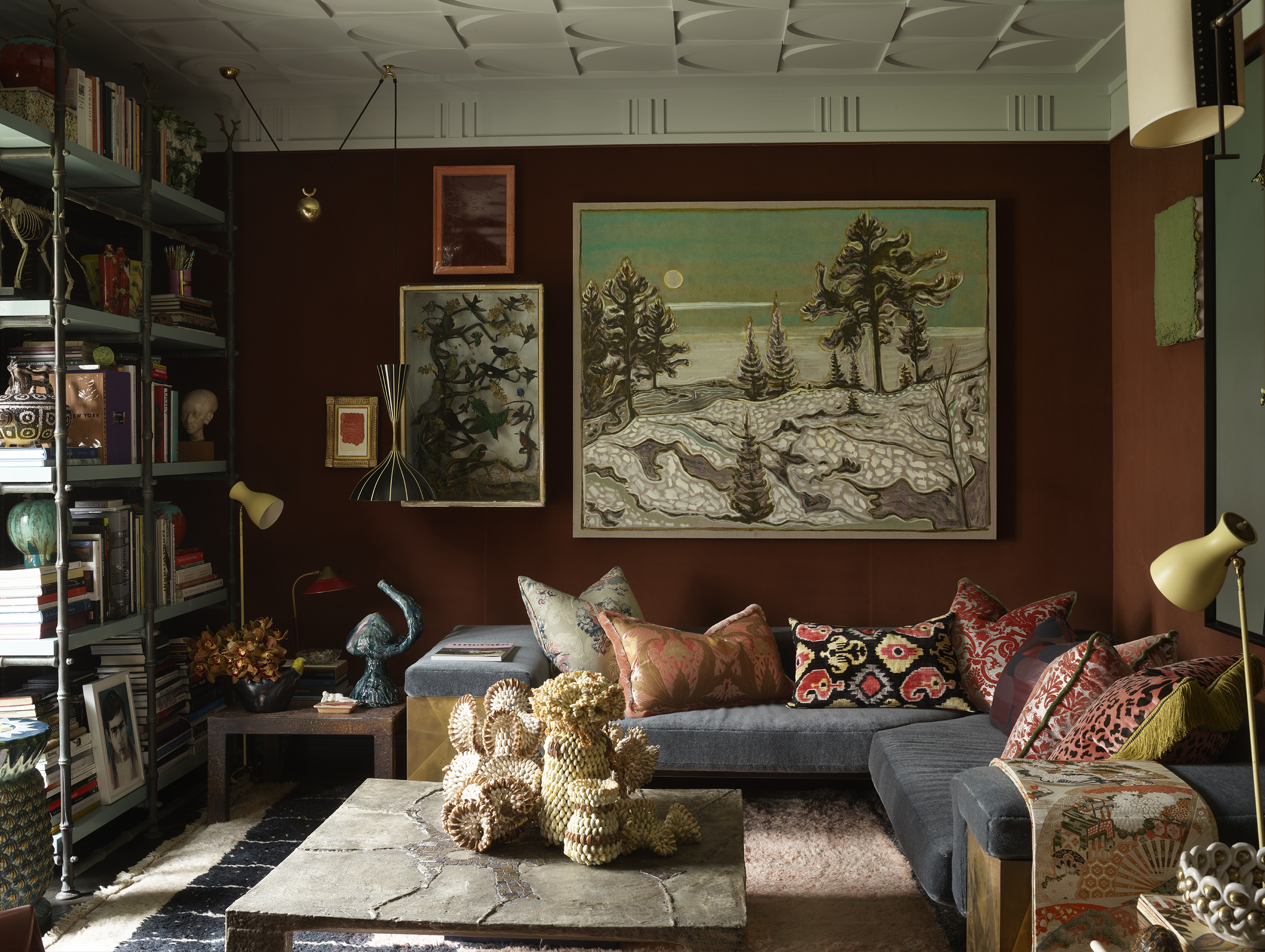 This designer’s Shoreditch apartment is ‘part grotto, part cabinet of curiosities’
This designer’s Shoreditch apartment is ‘part grotto, part cabinet of curiosities’The apartment serves as Hubert Zandberg’s ‘home away from home’, as well as a creative laboratory for his design practice. The result is a layered, eclectic interior infused with his personality
-
 Colour and texture elevate an interior designer’s London home
Colour and texture elevate an interior designer’s London homeTo beautify her home without renovations, Charu Gandhi focused on key spaces and worked with inherited details
-
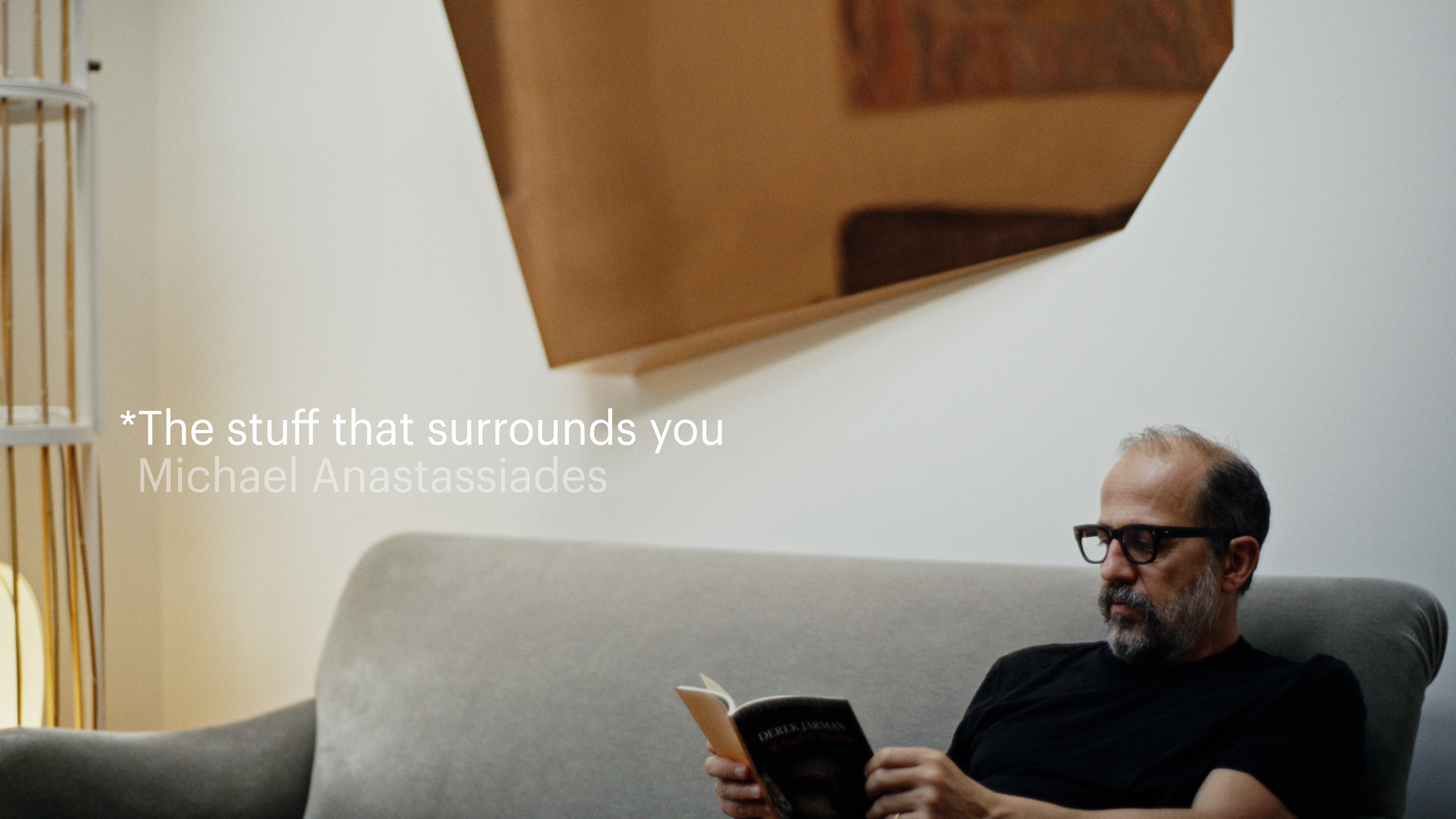 The Stuff That Surrounds You: Inside the home of designer Michael Anastassiades
The Stuff That Surrounds You: Inside the home of designer Michael AnastassiadesIn The Stuff That Surrounds You, Wallpaper* explores a life through objects. In this episode, we step inside one of the most considered homes we've ever seen, where Anastassiades test drives his own creations
-
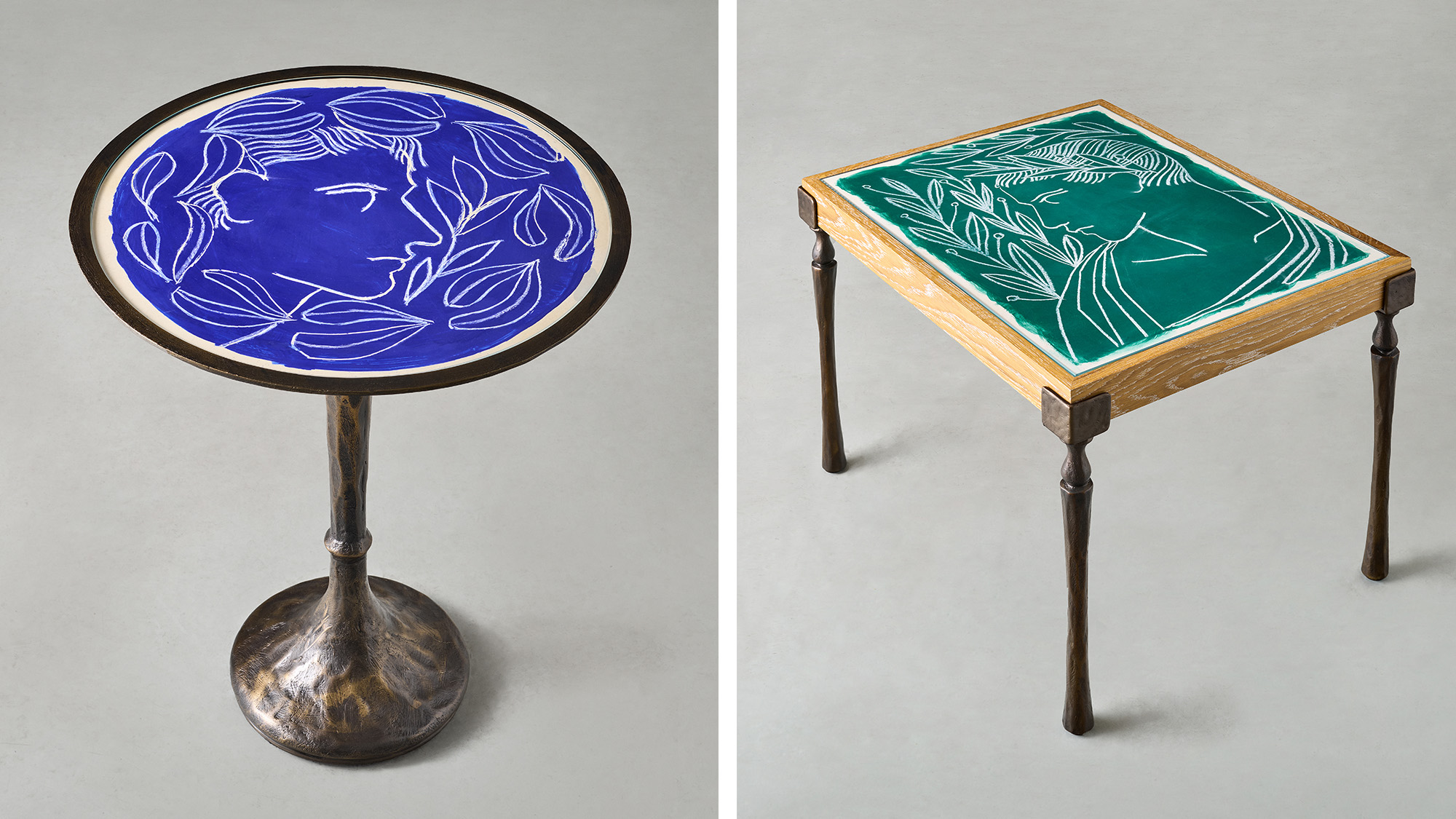 Francis Sultana and Roberto Ruspoli’s Greco-Roman-inspired furniture feels fresh and contemporary
Francis Sultana and Roberto Ruspoli’s Greco-Roman-inspired furniture feels fresh and contemporaryA new collection, launching at David Gill Gallery in London, presents furniture and decorative pieces inspired by Mediterranean villas, French art and Etruscan engraving
-
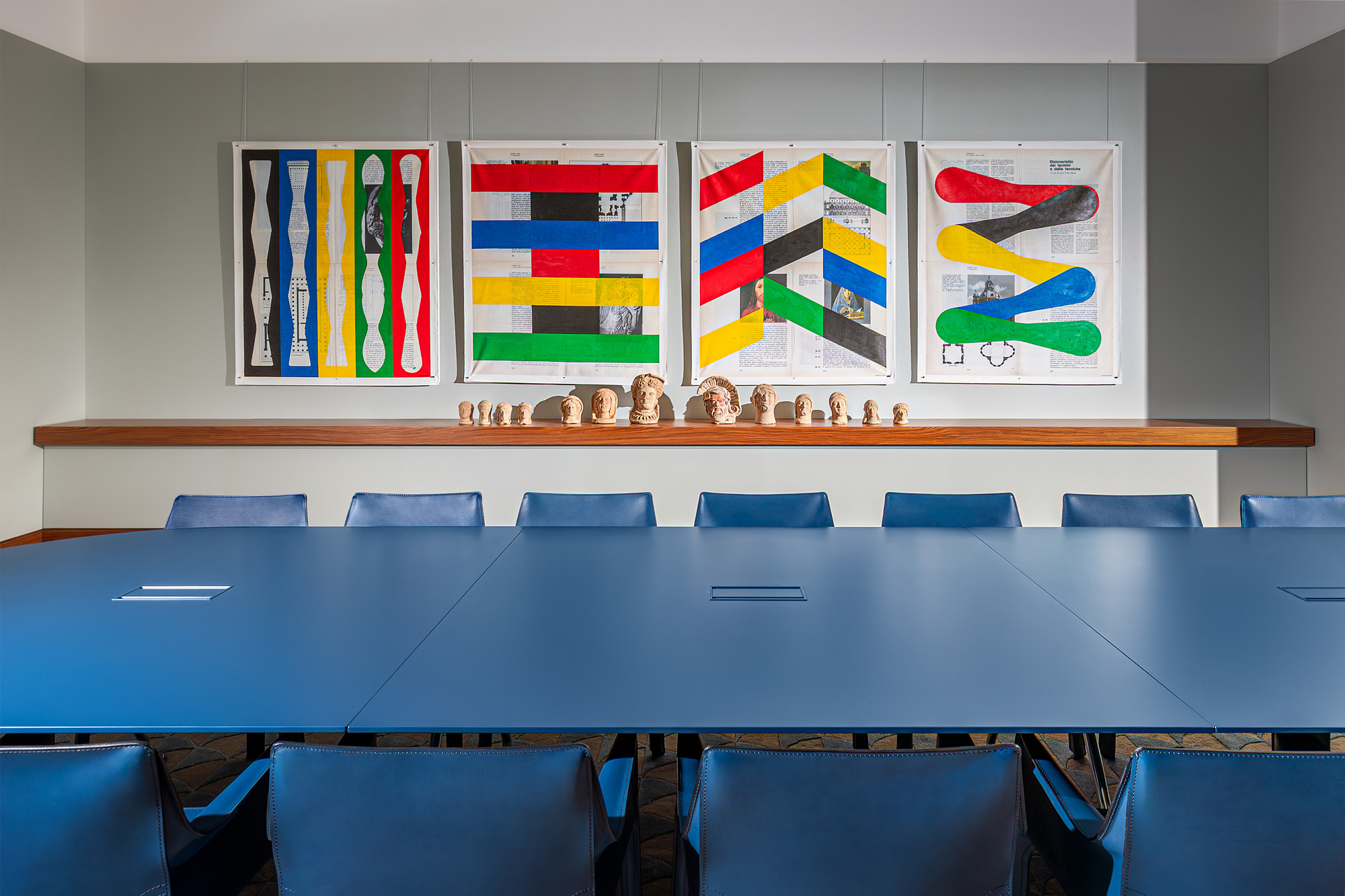 The new office of the Italian embassy in London is a love letter to the country’s creativity
The new office of the Italian embassy in London is a love letter to the country’s creativityWallpaper* takes a peek inside Casa Italia, the new Italian embassy in London, designed by our long-time collaborator Nick Vinson
-
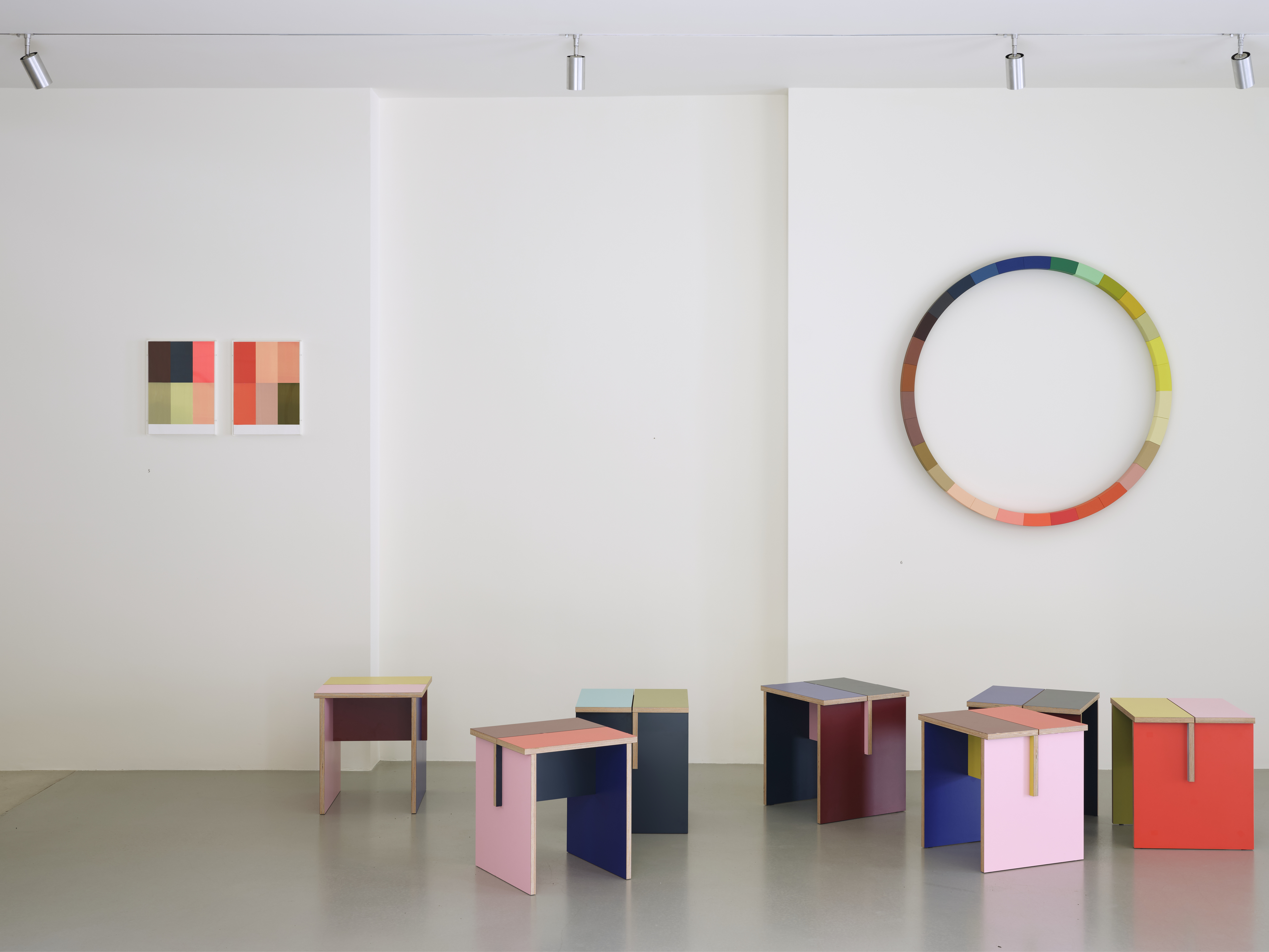 Sophie Smallhorn’s plywood tables for Uncommon Projects are colourful and modular
Sophie Smallhorn’s plywood tables for Uncommon Projects are colourful and modularThese modular tables by the artist and the plywood specialist play with colour for function, fun and flexibility
-
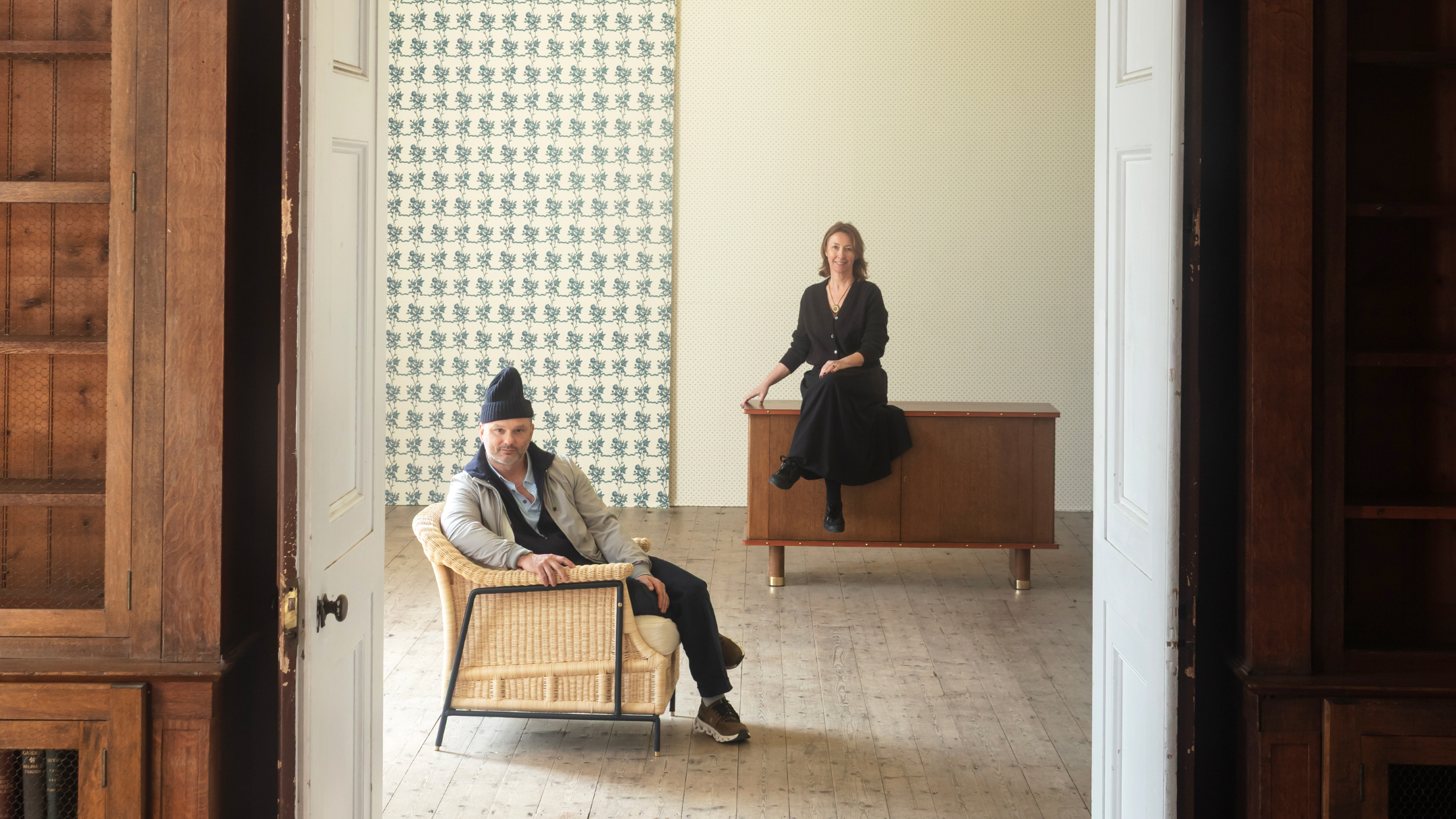 American vision meets British craft in Billy Cotton’s new collaboration with Soane Britain
American vision meets British craft in Billy Cotton’s new collaboration with Soane BritainYes, there’s rattan, but the lauded New York designer also brought in brass, oak and more. ‘There’s a sort of alchemy to these materials,’ he says
-
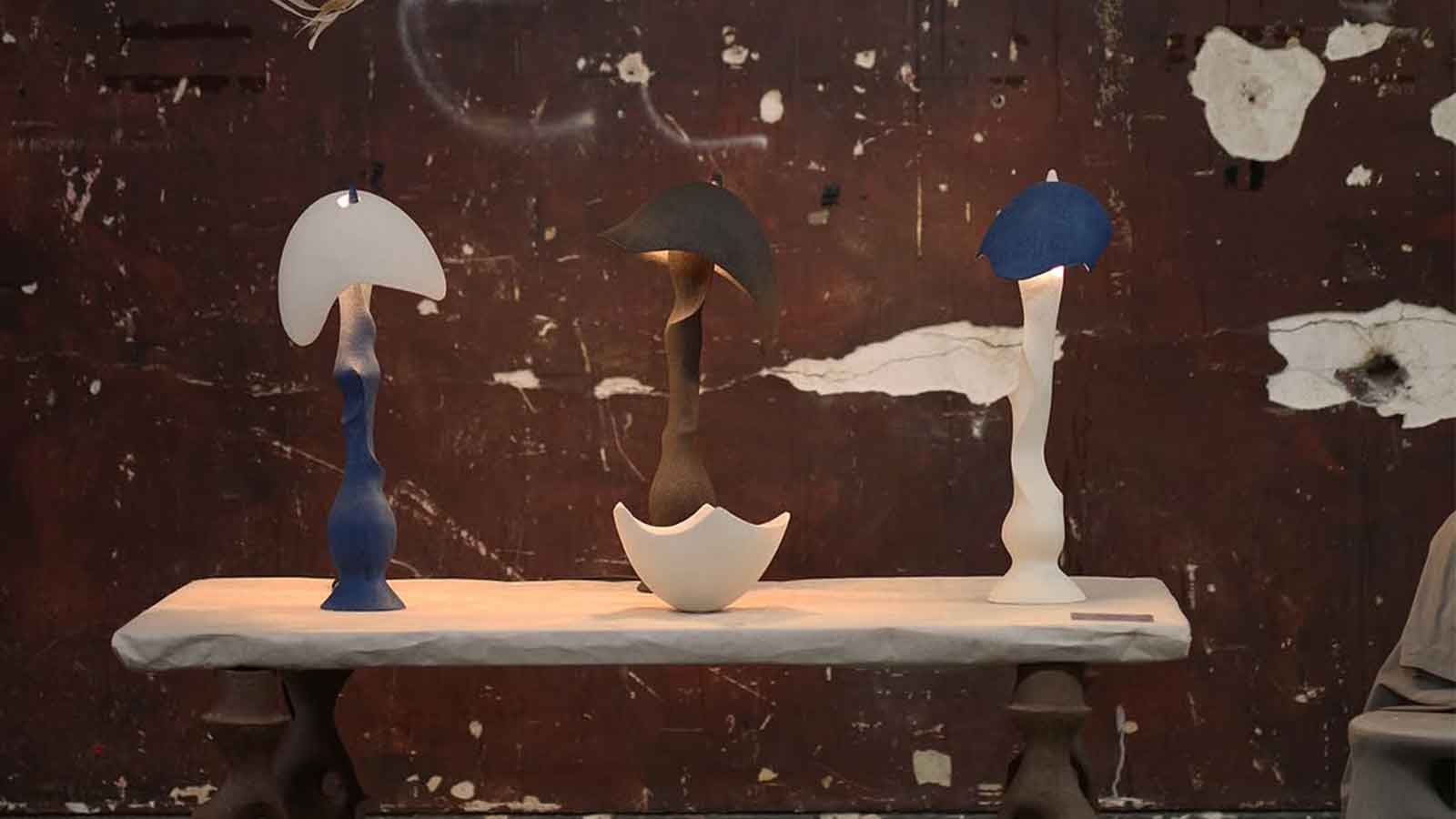 Six lighting designs we discovered at London Design Festival 2025
Six lighting designs we discovered at London Design Festival 20252025 was a year of great lights at London Design Festival: from leading lighting companies and emerging makers, here are six illuminating designs our team discovered across the city's exhibitions